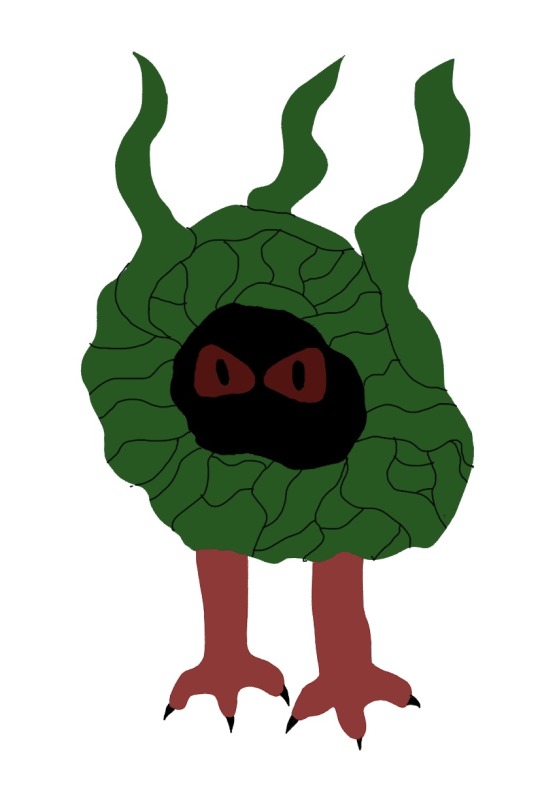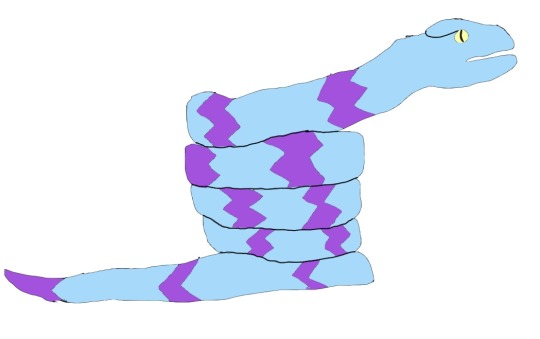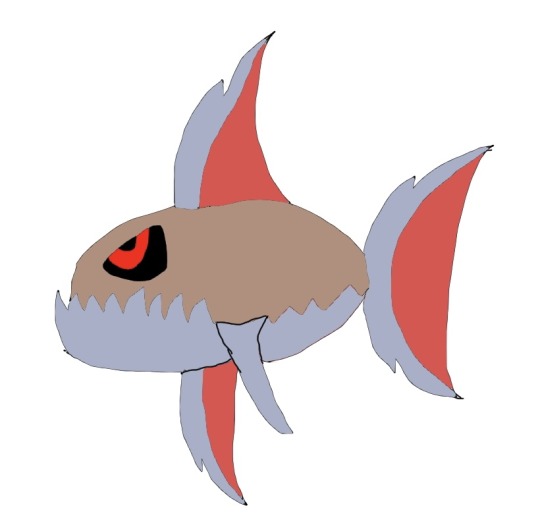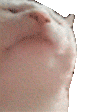#Kunwinjku
Explore tagged Tumblr posts
Text

Jimmy Midjawmidjaw
Kangaroo Painting, c. 1960-1965
#art#kangaroo#indigenous australians#australia#kunwinjku#gunbalanya#oenpelli#oceania#1960s#20th century
1 note
·
View note
Text
NOTE: entries in brackets are examples of languages within the category, some based on the UNESCO Atlas of the World's Languages in Danger
Edit: Cornish was reclassified from extinct to critically endangered in 2009 due to revival
#snailshit#the categories are ROUGH okay guys dont @ me#would like to get a broad audience because i think it'd be fun to see tunglr's thoughts !! (:#tumblr polls#polls#poll time#random polls#linguistics#language learning#language poll#fun polls#languages#bilingual#ancient history#ancient egypt#ancient greece
15 notes
·
View notes
Text

Luma Luma by Yirawala
Yirawala painted many images of Lumaluma and the Mardayin ceremony was an important topic in many of his works.
Luma Luma instilled fear in the first peoples, as his absolute authority was coupled with a degree of greed which was to be his downfall. Whatever foods his wives collected and cooked, he would declare to be taboo, thus they were not allowed to eat them. He would do the same with the game caught by the men. While the men were away on their hunting expeditions, he would sleep with their wives. While Lumaluma prospered, the others starved. Some of the husbands sought retribution but were no match for Luma Luma.
The ancestors of the Kunwinjku and Kuninjku decided to take their revenge on the giant. They laid a trap and the giant killed by fire. As he burned, the clansmen peppered his body with spears. While dying he begged to show the men how to draw the sacred rarrk or ancestral clan cross-hatched designs by cutting them into his flesh. Once his task was complete, Luma Luma retreated to the sea from whence he came and transformed himself back into the form of a sea creature.
235 notes
·
View notes
Text
Australian fakemon: regional variants
Another post in my series of fakemon for the Goorda region based on Australia and Aotearoa/New Zealand (but mostly the former). This time I'm showcasing three regional variant lines. Previous posts: birds, early game standards, misc, misc, starter variants, starters.
First off is Goordan Tangela, the Seaweed Pokemon, grass/water type. The Tangela in Goorda moved into the water and replaced their vines with seaweed. They are predators that use their feet to cling to rocks at the bottom of rivers and extend several strands of seaweed upward. Anything that touches the seaweed will be wrapped up and dragged down. Children in the Goorda region are warned to avoid patches of seaweed while swimming.

Goordan Tangela evolves to Muldrowk, the Seaweed Pokemon, grass/water type. Now capable of swimming and having adapted its feet into hands, Muldrowk has become the apex predator of Goorda's rivers, enough to even force Sarviyip (see starter variants post) out of their territory. Boaters in Goorda are taught to avoid seaweed patches as a Muldrowk can easily drag a small boat to its doom. Nobody knows what is beneath its seaweed pelt, but anything pulled in is never seen again.

Goordan Tangela and (especially) Muldrowk are based on two mythical creatures of Australian aboriginal folklore: the muldjewangk of the Ngarrindjeri people and the yawkyawk of the Kunwinjku people. These are creatures said to lurk in the river and are sometimes described as mermaids or mermen with seaweed for hair. The muldjewangk is viewed as a more malevolent creature that attacks boats and lure children into the water while the yawkyawk has various magical powers and can be benevolent or malevolent depending on its mood. Muldrowk has a mermaid-like shape and both members of the line are seaweed-covered dangerous creatures that live in the river. Muldrowk's name combines "muldjewangk", "yawkyawk", and "drown".
Next is Goordan Ekans, the Snake Pokemon, ice/poison type. The Ekans in Goorda live high in the mountains where they had to adapt to the cold conditions. In order to move between peaks and over crags, they coil their bodies up and bounce like springs. They are actually faster when bouncing then slithering. The venom of a Goordan Ekans inflicts frostbite.

Goordan Ekans evolves to Soroboruo, the Snake Pokemon, ice/poison type. Soroboruo chases prey in the mountains by biting its tail and rolling downhill like a wheel at extremely high speeds. Sometimes they roll all the way down into the lowlands and have to make their way back up the mountain. The scales on its back have grown extremely thick for protection when rolling, which also increases their defense. A Soroboruo biting its tail has been used as a symbol of cycles or infinity.

Goordan Ekans and Soroboruo are based on taipans, venomous snakes found in Australia and New Guinea. The zig-zag patterns on them come from patters found on some species of taipan. Soroboruo is based on the hoop snake, a folklore creature first invented in North America, but which has spread to other places, Australia included. hoop snakes are snakes that bite their tails and roll around like wheels to chase prey. The symbol of a snake biting its tail is called an ouroboros and is used to symbolize cycles, infinity, and some other stuff. In keeping with the Ekans line's naming scheme, Soroboruo is "ouroboros" spelled backwards.
The last line for today starts with Goordan Carvanha, the Sand Fish Pokemon, steel/ground type. Millions of years ago, the desert of Goorda was covered with a shallow sea. When the land rose and the water receded, the local Carvanha adapted to swim through sand and soil like water and became powerful desert predators that attack from below in swarms. They incorporate iron from the sand into their teeth and fins to better move through the sand and attack prey.

Goordan Carvanha evolves to Goordan Sharpedo. Its snout has adapted into a giant drill that lets it rocket through the earth at incredibly high speeds. It is a powerful lone predator that will attack anything that crosses the desert and can sense vibrations from far away. Pokemon attacked by Goordan Carvanha can hide on rocks for safety, but Sharpedo's drill can crush through rocks with ease. Short of flying, there is no escape from a hunting Sharpedo.

There's nothing deep in the inspiration for these two. It's just "what if piranha/shark, but on land?" The idea of sand sharks is certainly not unique to me. The idea of a piece of land having once been covered by a shallow sea came from the fact that a large portion of North America, much of which is now desert, was once covered by a shallow sea called the western interior seaway.
#pokemon#fakemon#australia#seaweed#australian mythology#australian folklore#muldjewangk#yawkyawk#snake#taipan#hoop snake#ouroboros#piranha#shark#tangela#ekans#carvanha#sharpedo#fish#regional variant#regional form#art#new artist#amateur art#drawing#artists on tumblr
7 notes
·
View notes
Text
I absolutely love that in languages that are vaguely familiar to me or not familiar at all but enjoyable. I love Finnish smash hits and Chinese and Korean smash hits, it's perfect! Also I love "Wildflower", who sing in an Aboriginal language that I just looked up, is called "Kunwinjku".
If you want any recommendations just hit me up. :)
me listening to foreign music and not understanding a single word of it

181K notes
·
View notes
Text




221) Megapodius reinwardt; nogal zmienny, orange-footed scrubfowl (kurak pomarańczowonogi), orange-footed megapode - niewielki megapod z rodziny Megapodiidae występujący na wielu wyspach Małych Wysp Sundajskich, a także w południowej Nowej Gwinei i północnej Australii.
Jest to ptak lądowy wielkości kury domowej, o ciemnym kolorze, z mocnymi pomarańczowymi nogami i spiczastym grzebieniem z tyłu głowy. Wykorzystuje szereg siedlisk leśnych i zaroślowych i skolonizował wiele małych wysp w całym swoim zasięgu. Jest płodny w podmiejskich ogrodach Darwin, gdzie ludzie nazywają go bush chook (kurą buszową), bush chicken (kurczakiem buszowym) lub bush turkey (indykiem buszowym).
Ogólnie rzecz biorąc, populacje wydają się być stabilne, a status ochrony gatunku jest uważany za najmniejszy. Kurak pomarańczowonogi żywi się nasionami, opadłymi owocami i bezkręgowcami lądowymi.
Istnieje 5 podgatunków. Niektóre podgatunki mogą być traktowane jako pełne gatunki, takie jak kurak tanimbarski (Megapodius tenimberensis), podczas gdy inne podgatunki mogą być uważane za podgatunki innych gatunków (np. M. r. buruensis jest czasami uważany za podgatunek dusky megapode):
M. r. buruensis
M. r. castanonotus
M. r. reinwardt
M. r. macgillivrayi
M. r. tumulus
M. r. yorki.
Ludzie z plemienia Kunwinjku z zachodniej części Ziemi Arnhemskiej znają tego ptaka jako kurrukurldanj.
0 notes
Text
Magpie Goose (Anseranas semipalmata) – Ancient Waterfowl

“ What you know about rollin' down in the country? When this primordial one goes numb, you can quacks that caused mental freeze. ”
– Eostre
The Magpie-goose (Anseranas semipalmata) is a species of waterfowl is the sole living representative species of the family Anseranatidae. This common waterbird is found in northern Australia and southern New Guinea.
Take Note: All of my drawings and photos of people, animals, plants, mythology, disasters, organizations, events, and more are purely fictitious. These are included in real-life situations and events with fictional characters or creatures that aren't real, be at your own risk. For nationality or indigenous, be advised. Ognimdo.
Etymology
The Kunwinjku of western Arnhem Land know this bird as manimunak. It became an important food item with the formation of wetlands about 1500 ya, and is depicted in rock art from this period. Mimi figures are often shown holding goose-feather fans. In Yolŋu Matha the bird is known as gurrumaṯtji, or around Ramingining as gumang.
In the Wadawurrung language, the magpie goose is known as Ngangok.
Physiology
The magpie-goose has a black head and neck, and its distinctive knob on the crown gets bigger as it gets older and is more prominent in males. The underwing's black margins contrast sharply with the white underparts. The legs, foot, and bill are all orange. Compared to men, females are somewhat smaller.
Abilities
Usually near wetlands, magpie-geese construct their nests in remote locations during the breeding season. The guy builds the nest nearly entirely by himself. Usually, it's only an unlined cup that's built into the top of a tree or suspended above a platform of crushed reeds.
Behavior
Pairs of geese mate for life, but a male may have two females. Two females may occasionally use the same nest to lay the large, oval, off-white colored eggs. All adults share incubation and care for the young. When you're scared, gather around and move swiftly out of harm's way. Even the chicks conceal it from potential predators, but if very startled, the magpie-goose may take to the skies.
Conservation
Aboriginal people have been hunting Magpie Geese for thousands of years, and these days many people hunt them for food. The Parks and Wildlife Service manage this hunt to ensure that we still have plenty of Magpie Geese left.
Lore
In Two Lights, Worldcraft, Equation, and Rescris series which is set in the future era for Rapunzel's Tangled Adventure sequel, this species' name was from Arrernte word as manimutyka (Aboriginal Arabic: منيموچکه) for this species, which is borrowed from Kunwinjku language.
Trivia
This quote was actually based on from one of the lyrics from Masked Wolf's Astronaut in the Ocean.
Reference
https://en.wikipedia.org/wiki/Magpie_goose
https://www.iucnredlist.org/species/22679732/92826979
https://australian.museum/learn/animals/birds/magpie-goose/
#ognimdo2002#earth responsibly#science fantasy#earth#ibispaint art#art ph#rapunzel's tangled adventure#dinosaur#theropod#saurischian#anseranas semipalmata#anseranas#magpie goose#goose#oceania#bird#anseriformes#anseranatidae
0 notes
Video
tumblr
[See video subtitles for English translation] Ngaye Ngalwakadj, ngayime bu ngadurrkmirri "mini dictionary" nawu Bininj Kunwok ba bu ngangeynan wanjh mandjad ngangeykurrme, yika ngangeyborledke ba bu kabirrinan nawu student nawu university bu kabirribimnan kabirriborlbme mandjad.
34 notes
·
View notes
Text
Image ID: Two bubble graphs on a background of a night sky. Both images have a lavender central bubble that reads "I like to read..."
Part 1.
Graphic novels: Oak flat, Moonshot 1 & 2 & 3, Borders by King and Donovan, This Place: 150 years retold, RED: A Haida Manga by Nicoll, 500 Years of Indigenous Resistance
Mystery: Winter Courts, Firekeepers Daughter
Memoir: Carry by Jensen, A History of My Brief Body, Darrel J. McLeod, Poet Warrior, Heart Berries
Short Stories: Night of the Living Rez, Dawnland Voices
Horror: The Only Good Indians, Empire of Wild, Erika Wurth, Taaqtumi, Moon of Crusted Snow, Anoka by Shane Hawk
Young Adult: Elatsoe, Surviving the City, Pemmican Wars: A Girl Called Echo, A Snake Falls to Earth, Ancestor Approved, Notable Native People
Essays: White Magic, Robin Wall Kimmerer, Shapes of Native Non-Fiction, A Mind Spread Out on the Ground
Cookboks: The Sioux Chef's Indigenous Kitchen, New Native Kitchen, Native Harvests, Mabu Mabu
Sff/Fantasy: Black Sun by Rebecca Roanhorse, Love after the End, Terra Nullius, Future Home of the Living God, Moon of the Crusted Snow, The Marrow Thieves
Part 2.
Fiction: Ceremony, There; There, Crooked Hallelujah, Louise Erdrich, The Seed Keeper, The Removed, Noopiming, Split Tooth, Two Old Women, Two Feathers Fell from the Sky, Leanne Betasamosake Simpson, Windigo Moon
Nonfiction: Anton Trever, Red Nation Rising, Gichigami Hearts, Northern Lights by Ali, Genocide of the Mind, Reclaiming Two-Spirits, As We Have Always Done, Our History is the Future, Decolonizing Trauma Work, An Indigenous Peoples History of the US
Poetry: Jay Harjo, Tommy Pico, Natalie Diaz, Jake Skeets, Arielle Twist, Jaye Simpson, Heid E. Erdrich, Layli Long Soldier, Joshua Whitehead, Rosanna Deerchild, When the Light of the World Was Subdued
Children's Picture Books: Johnny's Pheasant, A Kunwinjku Counting Book, We are still here by Sorell, Keepunumuk, We are Water Protectors, Ispik Kaki Peyakayak, Sweetest Kulu, We All Play, Little You, Fry Bread, The Whale Child, The First Blade of Sweetgrass, I Sang You Down From the Stars
Can someone image Description this for me? I have a migraine but a friend suggested I post this.


-fae
843 notes
·
View notes
Photo

Jimmy Mijau Mijau Crocker Island Bark Painter, 1960s. "From the 1940s on, Aboriginal Australian artist Jimmy Mijau Mijau or Midjawmidjaw became one of the most recognized artists from the Western Arnhem Land, located in northern Australia. He was born to the Aboriginal Community of Minjilang, formerly known as Mission Bay on Croker Island, and spoke Kunwinjku, an Aboriginal language of Northern Australia. In the 1960s, Mijau Mijau was one among a group of dynamic artists on Crocker Island who developed their own recognizable style of Western Arnhem Land, with cross-hatched figures placed on a red ochre background. Working closely with archaeologists who collected bark paintings, the group gained attention and brought modern bark painting to the forefront." https://www.instagram.com/p/CZIAyg0NEhB/?utm_medium=tumblr
125 notes
·
View notes
Text

Namarrkon the lightning Spirit is a spirit of Kunwinjku people, Oenpelli, Western Arnhem Land.
via newguineatribalart
10 notes
·
View notes
Photo

‘Mandjabu’ reflects the harmonic relationship between Kunwinjku people and their fresh water country. The progress of Mandjabu (Fish Trap), meant to catch fish to feed families will be celebrated in this exhibition.
@Injalak Arts Gunbalanya
2 notes
·
View notes
Text

Luma Luma by Yirawala
Luma Luma instilled fear in the first peoples, as his absolute authority was coupled with a degree of greed which was to be his downfall. Whatever foods his wives collected and cooked, he would declare to be taboo, thus they were not allowed to eat them. He would do the same with the game caught by the men. While the men were away on their hunting expeditions, he would sleep with their wives. While Lumaluma prospered, the others starved. Some of the husbands sought retribution but were no match for Luma Luma.
The ancestors of the Kunwinjku and Kuninjku decided to take their revenge on the giant. They laid a trap and the giant killed by fire. As he burned, the clansmen peppered his body with spears. While dying he begged to show the men how to draw the sacred rarrk or ancestral clan cross-hatched designs by cutting them into his flesh. Once his task was complete, Luma Luma retreated to the sea from whence he came and transformed himself back into the form of a sea creature.
18 notes
·
View notes
Text
Kunwinjku Painters - Dream Time Image Custodians
Kunwinjku Painters – Dream Time Image Custodians
Looking For Famous [tp_search_shortcodes id=1 origin=”” destination=”NYC” hotel_city=”New York City, United States, 2292, 20857, city, United States” type=”avia_hotel” subid=””] [tp_in_our_city_fly_shortcodes destination=NYC title=”” limit=100 paginate=true stops=0 one_way=false subid=”” currency=”USD”] [tp_ducklett_widget responsive=true limit=9 type=slider filter=0 subid=””] How to get full…
View On WordPress
0 notes
Text
A Kunwinjku Counting Book by Felicity Wright, illustrated by Gabriel Maralngurr
A Kunwinjku Counting Book by Felicity Wright, illustrated by Gabriel Maralngurr
A Kunwinjku Counting Book by Felicity Wright, illustrated by Gabriel Maralngurra. Enchanted Lion, 2022. 9781592703562 Rating: 1-5 (5 is an excellent or a Starred review) 4 Format: Hardcover picture book What did you like about the book? Ostensibly a counting book, this lavishly produced look at Australian animals is really an art book. Maralngurra, an Aboriginal Australian artist, draws…

View On WordPress
0 notes
Photo

Echidna... ngarrbek in Kunwinjku language from Gunbalanya. Weavery’s Arnhem Weaving journey this July is full!!! However, rejoice, as you can come on the next one in late September! Book here https://www.eventbrite.com.au/o/rene-bahloo-10793355289 Pervious journey pics at #arnhemweavingjourney
2 notes
·
View notes